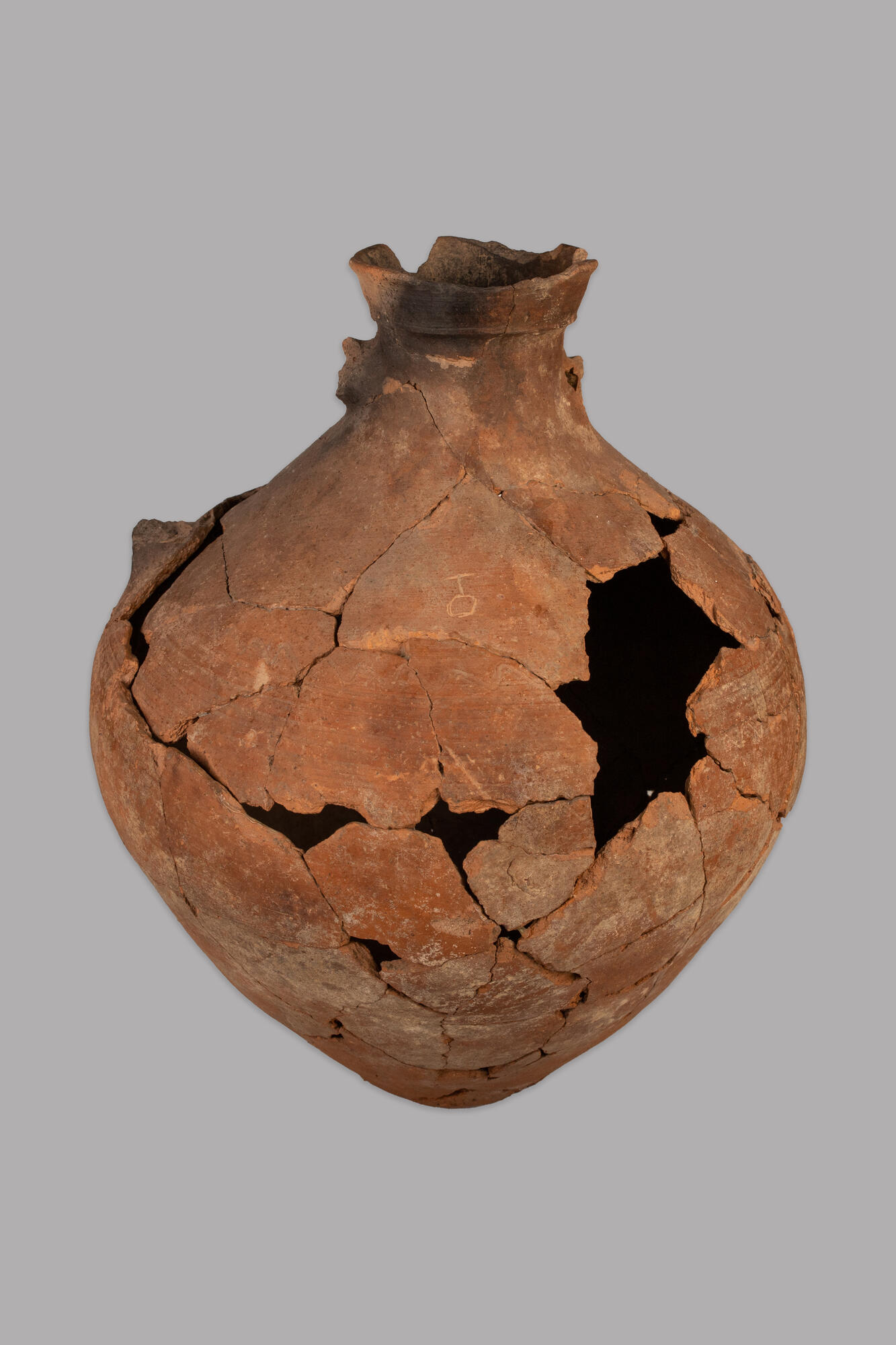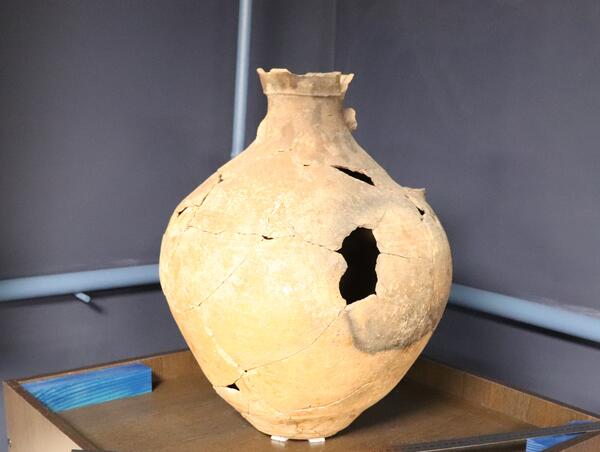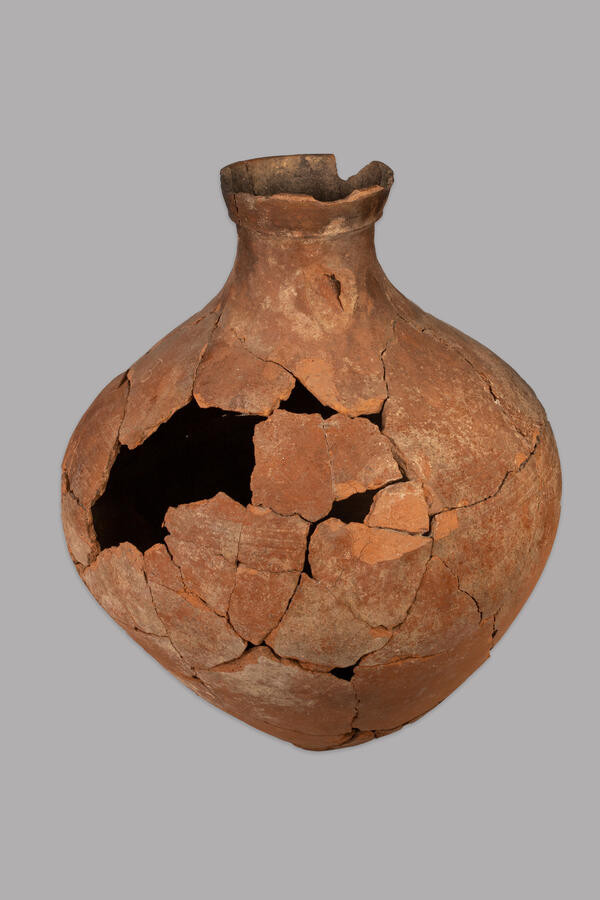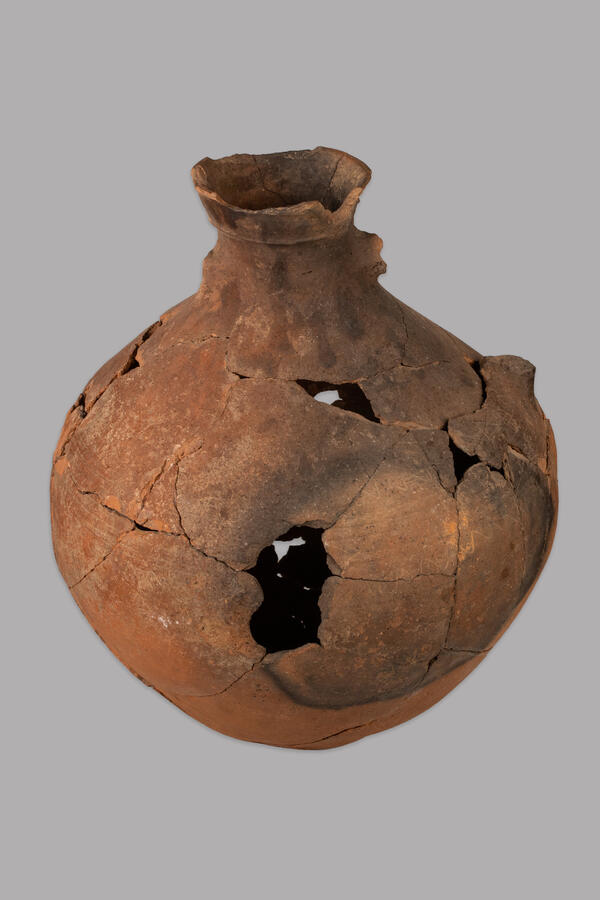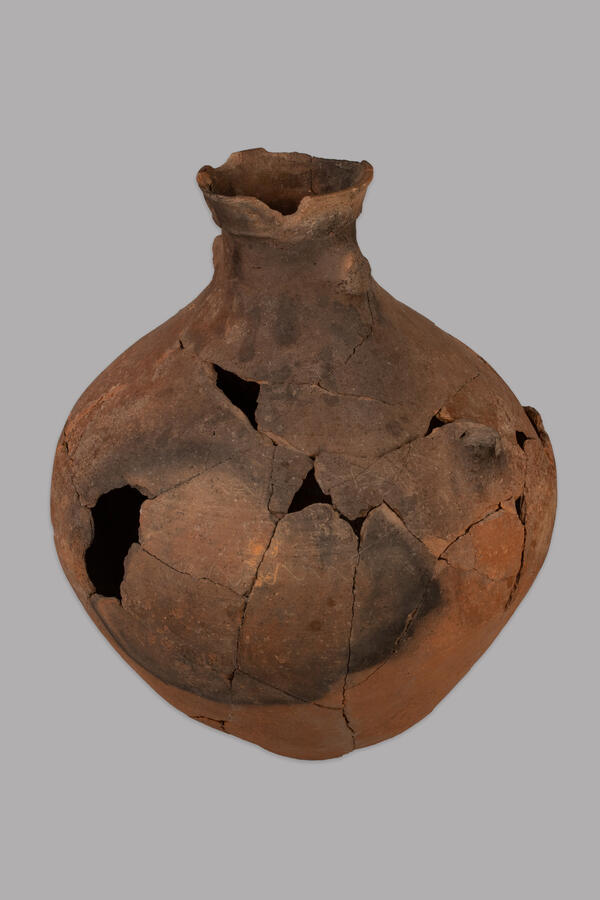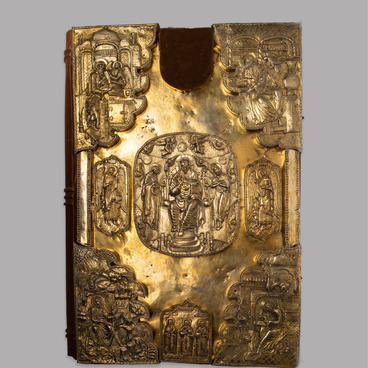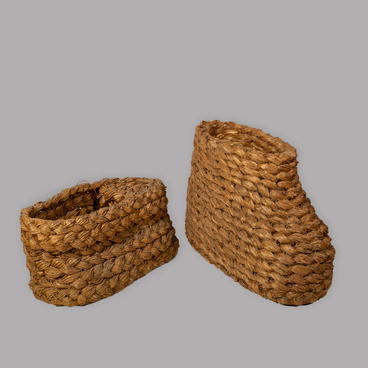In July 2003, during construction work in the city of Lebedyan, at the confluence of the Gorodyanka River with the Don, archeologists made a sensational discovery. In the cellar, which was filled with debris, they found a collection of Byzantine ceramics. The find included four fragmented vessels, three of which were fully restored.
All the vessels date back to the period from the middle to the second half of the 13th century. They were imported to the territory of Rus from Byzantium. The most interesting object is the Byzantine amphora decorated with drawn lines, which resemble the letters “HO”, “R”, and “B” and signs in the form of three-toed bird’s feet.
It is likely that different owners made the drawings at different times. The letters were applied in such a way that they could only be read from above. Such details on amphorae are quite common. However, it is uncommon for the images to cover almost the entire surface of the vessel.
No Greek amphorae are known to feature the Latin letters “R” and “B”. The person who carved them arguably came from Western Europe and possibly was an Italian. In the 13th century, merchants from Venice and Genoa expanded their trade in Byzantium and the Black Sea region. After the crusaders took Constantinople in 1204, immigrants from Western Europe — Germany, France, Spain — flooded continental Byzantium. Possibly, one of those immigrants left the marks on the amphora.
This amphora had probably changed owners more than once before it was brought to the Don. Unfortunately, three of the four vessels are now in a private collection and cannot be shown to the public. However, one vessel was donated to the Lipetsk Regional Museum of Local Lore and put on display in the permanent exhibition.
This flat-bottomed amphora is 50 cm high. It was embellished with a wide frieze of linear pattern. The shoulder of the amphora features some images, which were scratched after the vessel had been fired. They could be both abstract signs and monograms “T” and “O”. Based on general historical evidence, the building where the vessels were found had been a part of a medieval Russian settlement on the site of the current Lebedyan.
All the vessels date back to the period from the middle to the second half of the 13th century. They were imported to the territory of Rus from Byzantium. The most interesting object is the Byzantine amphora decorated with drawn lines, which resemble the letters “HO”, “R”, and “B” and signs in the form of three-toed bird’s feet.
It is likely that different owners made the drawings at different times. The letters were applied in such a way that they could only be read from above. Such details on amphorae are quite common. However, it is uncommon for the images to cover almost the entire surface of the vessel.
No Greek amphorae are known to feature the Latin letters “R” and “B”. The person who carved them arguably came from Western Europe and possibly was an Italian. In the 13th century, merchants from Venice and Genoa expanded their trade in Byzantium and the Black Sea region. After the crusaders took Constantinople in 1204, immigrants from Western Europe — Germany, France, Spain — flooded continental Byzantium. Possibly, one of those immigrants left the marks on the amphora.
This amphora had probably changed owners more than once before it was brought to the Don. Unfortunately, three of the four vessels are now in a private collection and cannot be shown to the public. However, one vessel was donated to the Lipetsk Regional Museum of Local Lore and put on display in the permanent exhibition.
This flat-bottomed amphora is 50 cm high. It was embellished with a wide frieze of linear pattern. The shoulder of the amphora features some images, which were scratched after the vessel had been fired. They could be both abstract signs and monograms “T” and “O”. Based on general historical evidence, the building where the vessels were found had been a part of a medieval Russian settlement on the site of the current Lebedyan.
